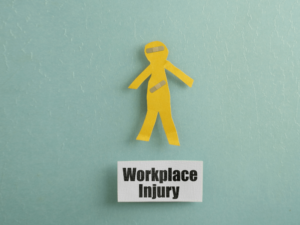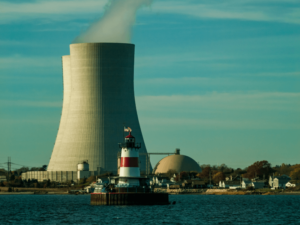What Happens When Chemical Plants Explode & How to Develop Infrastructure Security
In our modern society, chemical plants play a pivotal role in our daily lives. Scattered across the globe, they work tirelessly to produce the diverse array of products and substances that have become essential to our existence. However, amidst their undeniable benefits, there looms a shadow of risk, which is why infrastructure security should not be taken lightly.
These plants, housing hazardous materials of all kinds, possess a heightened potential for catastrophic explosions. The repercussions of such incidents can be dire, threatening lives and causing widespread damage.
Imagine the explosive consequences that could arise if chemicals or other hazardous substances were mixed with the wrong elements or mishandled. It’s a dangerous dance where a single misstep can ignite a disastrous chain reaction.
In light of this reality, safeguarding these plants becomes paramount.
But what exactly unfolds when an explosion or other serious event shatters the tranquility of a chemical plant? What are the repercussions that ripple through our communities and the environment? And how we can shield chemical plants, as well as other types of critical infrastructure, from potential disasters.
Let’s find out.
Our Interconnected Society
As mentioned, power plants are a fundamental pillar of modern society, providing the electricity necessary to power our homes, businesses, and essential services. However, they don’t work alone, as they rely on a complex web of interconnected infrastructures for their smooth operation. And any failure within this network can trigger a domino effect with far-reaching consequences. For instance, they rely on a steady fuel supply, such as natural gas, coal, or uranium, which requires transportation and storage infrastructure. Additionally, power plants require water sources for cooling systems, which are often linked to water treatment plants and distribution networks.
On the other hand, without a stable and reliable supply of electricity from power plants, various critical infrastructures would cease to operate effectively, leading to widespread disruptions. Industries relying on electric-powered machinery would grind to a halt, affecting manufacturing, transportation, and logistics. Communication networks, including telecommunication systems and the internet, heavily rely on electricity, and their failure would impede information flow and connectivity. Healthcare facilities, including hospitals and medical equipment, require an uninterrupted power supply to sustain life-saving operations. Moreover, the functioning of transportation systems, including traffic signals, railways, and airports, heavily relies on electricity. The absence of electricity from power plants would result in chaos, paralyzing daily life activities, and compromising public safety. Therefore, protecting power plants becomes crucial to ensure the reliable functioning of critical infrastructures and the stability of our society as a whole.
Lack of Infrastructure Security Consequences: Employee Injuries and Surrounding Area

Chemical plant explosions pose immediate threats to the health and safety of plant employees. Burns from chemical reactions or the heat of the explosion are the most common injuries, varying in severity from minor to life-threatening. Employees can also suffer physical injuries from falling debris or collapsing structures, resulting in bruises, broken bones, and more serious harm.
Smoke inhalation is another critical concern during chemical plant explosions. The release of smoke can lead to short-term and long-term effects on the well-being of employees. Inhalation of smoke during evacuation can cause immediate fatalities, while long-term exposure may result in respiratory system damage. Additionally, individuals involved in such incidents may experience post-traumatic stress disorder and other mental health ailments, making it challenging to resume their daily lives.
The impact of a chemical plant explosion extends beyond the plant itself, affecting the surrounding community. The property values of homes near the site can dramatically decrease and may not recover. This can ruin the economic standing of the entire area, especially if the chemical plant isn’t able to re-open following the explosion, meaning the area loses countless jobs.
There are also health concerns for the people who live near the site of a chemical explosion. With a massive amount of smoke and chemicals entering the air supply and potentially the water supply as well, residents near plant explosions become more vulnerable to sickness. Symptoms like skin rashes, breathing problems, nausea, and fatigue are common and don’t always have a clear explanation outside of a person’s proximity to a chemical plant explosion.
Infrastructure Security: Environmental Consequences

Chemical plant explosions also result in long-term environmental consequences. Hazardous chemicals released during an explosion can contaminate the air, water, and soil. This contamination compromises air quality, poses threats to the water supply, and adversely affects agriculture in the area. The lingering presence of chemicals can lead to ongoing health risks and prove challenging to remediate, requiring extensive environmental cleanup efforts.
Critical Infrastructure Security and Protection
Needless to say, accidents involving critical infrastructure like chemical plants can have dire consequences for individuals, communities, and the environment. Even seemingly minor lapses can result in serious explosions. This is why critical infrastructure security needs to be a top priority in our society. Let’s look at some of the ways that infrastructure like chemical plants can remain protected and accident-free.
Address Cyber Security Threats

Chemical plants need to be fully protected from cyber attacks. Just because something serious like this hasn’t happened before doesn’t mean that it can’t or that hackers aren’t hoping to attack a chemical plant in that way. Hackers with bad intentions could potentially break into the plant’s network and remotely alter the conditions in a way that causes an explosion or accident. In some cases, this has become a bigger risk to chemical plant explosions than human error or other conditions outside of anyone’s control. The silver lining is that cyber security is something that can be controlled. It’s just a matter of recognizing the types of cyber threats that could attack critical infrastructure and Implementing robust cyber security measures to prevent unauthorized access and remote manipulation of plant operations.
Regular Inspections
Performing regular inspections of critical infrastructure is the best way to avoid explosions and other accidents. With routine inspections, it’s possible to ensure that equipment is functioning properly and that nothing out of the ordinary is taking place. Even if something unusual is spotted during an inspection, it usually means it’s been spotted early enough to do something about it rather than risking adverse events because the problem wasn’t detected in time. Deploying advanced monitoring and detection systems can provide early warnings of potential safety breaches. These systems can include sensors, alarms, and video surveillance, enabling prompt disaster response and mitigation efforts. Real-time data analysis and predictive technologies can aid in identifying potential risks before they escalate.
Trained Workers

Well-trained and educated personnel are the backbone of a safe chemical plant environment. Invest in comprehensive training programs for employees, emphasizing safety protocols, hazard identification, and emergency response procedures. Ongoing training and refresher courses ensure that employees remain up-to-date on best practices and are equipped to handle unforeseen circumstances. Cybersecurity training should also be included to enhance awareness of potential threats.
Physical Security
Of course, just because cyber security is a greater need for critical infrastructure doesn’t mean physical security can become more lax. For chemical plants, in particular, there still needs to be a heavy security presence and round-the-clock monitoring of facilities where chemicals and other hazardous materials are being stored and utilized. Given the potential consequences, Chemical plants should implement robust security measures to protect against external threats. This includes controlled access to sensitive areas, surveillance systems, perimeter fencing, and personnel background checks. Collaborating with local law enforcement agencies can help in developing effective security strategies.
Community Outreach and Emergency Preparedness

Establishing effective communication channels with neighboring communities is crucial. Educating residents about potential risks, evacuation procedures, and sheltering options can enhance preparedness. Conducting regular emergency drills involving local authorities and emergency response teams can ensure a coordinated and efficient response in the event of an explosion.
Proactive Approach to Infrastructure Security
Chemical plant explosions pose immense dangers, with far-reaching consequences that encompass human life, the environment, and critical infrastructures. It is crucial to comprehend the causes and effects of these incidents and take proactive measures to safeguard our communities and the integrity of our critical infrastructures.
However, the efforts to protect against chemical plant explosions and other critical infrastructure security go beyond prevention alone. By fostering research and development in the realm of chemical plant safety, we can unlock advanced materials, technologies, processes, and innovative solutions that significantly reduce the risk of explosions.
At EIS Council, we are dedicated to making this vision a reality. Collaborating with global partners, our mission revolves around developing innovative tools that ensure critical infrastructure security and the smooth functioning of society. Join us in this endeavor by becoming a member today! Together, we can construct a better and safer future for all.
Create Impact with us:
Join our membership and
contribution programs
Participate in our
upcoming events:
Schedule a call with
our experts:
Advancing Earthquake Resilience: Strategic Urban Planning and Global Partnerships
In an era where urban landscapes continue to sprawl and the frequency of natural disasters seems to be on the rise, the importance of building resilient cities has never been more pronounced. Earthquakes, in particular, pose a significant risk to densely populated areas, with the power to cause extensive damage and incur millions in damage […]
Cyber Resilience in the Energy Sector: Safeguarding the Grid from Digital Disruptions
In today’s interconnected world, the energy sector stands as a vital backbone of national and global infrastructures, facilitating everything from lighting our homes to powering industries. However, this sector is increasingly finding itself in the crosshairs of cybercriminals, making cyber resilience not just a matter of technological integrity but of national security. The concept of […]
The Role of Local Governments in Strengthening Infrastructure Resilience
The significance of local governments in strengthening infrastructure resilience cannot be understated. Often perceived as entities primarily focused on addressing routine community concerns and improvements, their responsibilities extend far beyond these day-to-day operations. In the realm of preparing for and mitigating the effects of large-scale, catastrophic events—referred to as “black sky” disasters—local governments emerge as […]


